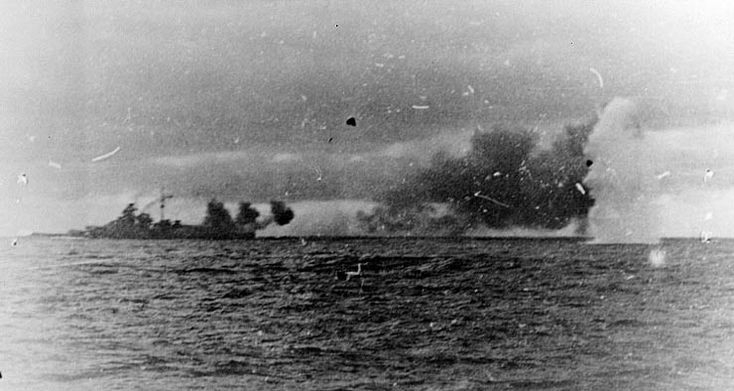Battle of Denmark Strait ( May 24, 1941 )
The Battle of the Denmark Strait occurred on May 24, 1941, and involved the German battleship Bismarck and the British battlecruiser HMS Hood, as well as the battleship HMS Prince of Wales. Here is an overview of the battle:
Taking place in the Denmark Strait, located between Greenland and Iceland in the North Atlantic Ocean, the engagement involved the following vessels:
1. German Navy (Kriegsmarine):
- Bismarck (battleship) under the command of Admiral Günther Lütjens
- Prinz Eugen (heavy cruiser) under the command of Captain Ernst Lindemann
2. Royal Navy:
- HMS Hood (battlecruiser) commanded by Vice Admiral Lancelot Holland
- HMS Prince of Wales (battleship) commanded by Captain John Leach
The sequence of events unfolded as follows:
1. The German ships Bismarck and Prinz Eugen aimed to break out into the Atlantic and disrupt Allied shipping.
2. The British ships Hood and Prince of Wales were dispatched to intercept and engage the German vessels.
3. At approximately 05:52, the Bismarck fired its main guns at the Hood from a distance of around 15 miles.
4. The Hood suffered a devastating explosion as one or more shells from the Bismarck struck its magazine.
5. The Hood rapidly sank, with only three survivors among its crew of over 1,400.
6. Although the Prince of Wales engaged the Bismarck, it sustained damage and was compelled to withdraw from the battle.
7. The Bismarck and Prinz Eugen managed to avoid further engagement and continued with their mission.
The official statements made after the battle were as follows:
- The German Navy declared the sinking of the Hood as a significant victory and emphasized the Bismarck's successful escape.
- The British Admiralty acknowledged the loss of the Hood and underscored the necessity of locating and engaging the Bismarck to prevent it from attacking Allied convoys.
Regarding the outcome and future impact:
- The Battle of the Denmark Strait resulted in a clear triumph for the German Navy. The sinking of the Hood, which was one of the Royal Navy's most formidable and renowned warships, dealt a significant blow.
- The loss of the Hood triggered intensive efforts by the British to locate and sink the Bismarck, culminating in the subsequent Battle of the North Atlantic.
- In the Battle of the North Atlantic, British naval forces, including aircraft from the aircraft carrier HMS Ark Royal, eventually found, engaged, and sank the Bismarck on May 27, 1941, using torpedoes.
- The Bismarck's sinking marked the end of its short yet eventful career and substantially reduced the threat posed by German surface raiders in the Atlantic.
- The engagement also highlighted the vulnerability of large warships to magazine explosions, leading to heightened attention toward armor protection and safety measures in subsequent naval designs.
Overall, the Battle of the Denmark Strait left a lasting impact on naval warfare during World War II and remains one of the most notable naval engagements of the conflict.






Comments
Post a Comment